By Jon Anderson, Therapy Resource, Texas
I wanted to take a few moments to celebrate our newest CTOs (Chief Therapy Officers) in Keystone. The CTO designation is the highest designation a therapy leader in the organization can receive; it is a tall order to be in this elite club. Please join me in congratulating this elite group of Texas leaders!
There is so much to say about these two incredible ladies, but I’ll keep this short and just share a few highlights.
Cara Koepsel, SLP, DOR, CTO, Golden Acres, Dallas, TX
 Cara became the DOR at Golden Acres in May 2018, after being one of our first DORITOs (Director of Rehab in Training) in Keystone, and then successfully transitioning to DOR (Director of Rehab) at Lake Village for nine months. When Cara came to Golden Acres, the therapy department was doing well financially and operationally in key therapy metrics; however, Cara reminded us that GOOD is the enemy of GREAT.
Cara became the DOR at Golden Acres in May 2018, after being one of our first DORITOs (Director of Rehab in Training) in Keystone, and then successfully transitioning to DOR (Director of Rehab) at Lake Village for nine months. When Cara came to Golden Acres, the therapy department was doing well financially and operationally in key therapy metrics; however, Cara reminded us that GOOD is the enemy of GREAT.
Cara truly is the epitome of ownership, and quickly jumped in at Golden Acres. In fact, there isn’t a function in the facility that she is not willing to take on herself or assist with as needed. She has learned how to run payer verifications for when the BOM is off; she reviews the 24-hour report and clinical documentation to identify skill in place patients; she coaches the MDs on peer-to-peer reviews for insurance authorizations, and also plays a vital role in the Keystone North market with the education and training of our other DORs.
Cara has sprinkled her expertise in the market by assisting in the training of three additional DORITOs that are now also DORs of facilities in Keystone. She has been asked to present at many therapy leader meetings, and even at the annual Ensign leadership meeting in Dallas this past year. PNSD has steadily been above $60 for well over a year (amazing!), and Golden Acres is always in the top few buildings for productivity and cost per minute. It has been truly amazing to watch Cara grow into this tremendous therapy leader and watch her partner with an amazing CEO, Rick Forscutt, and COO Karen Calma to finish out the trifecta here, and we are so thrilled to announce her new title as a Chief Therapy Officer (CTO).
Agatha Pedro, OTR, DOR, CTO, Timberwood, Livingston, TX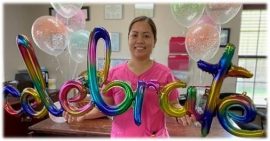
Agatha relocated from outside the state of Texas into a city with such charm, known as Livingston, TX, four years ago to help lead the therapy team at Timberwood. The shift from what she was familiar with could have been a tough adjustment for some, but Agatha stepped right in and embraced the city and facility with open arms.
The transition came with some growing pains such as a very limited therapy team, ever-changing department heads, and very linear therapy services that were offered. In a short amount of time, Agatha has nearly doubled her therapy team through strong partnership efforts with our Keystone Therapy Recruiter, Richard Johnson. Agatha made a conscious decision to create an interview process that was inclusive with other team members. She prides herself on her onboarding process so each new team member can be fully immersed with the Ensign experience.
There have been changes within the leadership team at Timberwood, but those changes did not impede the flow of progress. With humility and vocal confidence, Agatha supports the needs of other departments by being an actionable leader. Patient care has always remained at the forefront, as evidenced by Agatha’s competitive productivity standards that she maintains as an Occupational Therapist. She understands the operational demands of her role as Director of Rehab, but she knows that her clinical impact provides greater depth in the overall scope.
As a DOR, some may be intimidated to comfortably partner with their ED and DON … not Agatha. Agatha will initiate meetings, bring ideas, and execute tasks through strategic implementation processes. Prior to Agatha, the therapy department had very limited programs and led a very traditional process in the services that were offered. In four short years, the Timberwood facility now offers a variety of programs and therapy services that rival competitors.
Prior to the start of the pandemic, Timberwood was on track to have a strong growth in outpatient, far more than they have ever had in the past. The reputation of the therapy department created a pathway for patients to discharge and return for outpatient services. Agatha is LSVT Big certified; this is a world-recognized certification used in treating movement aspects of Parkinson’s disease. Long-term care programming has been a goal for Agatha, and she has steadfastly kept her focus there for the last two years. Through her passion for learning and intelligent risk taking, she has transformed long-term care at Timberwood.
We are half-way through 2020, and Agatha is projected to finish the year with her highest revenue performance to date. More importantly, the clinical backbone has remained solid. Therapy continually finishes with exceptional MSCA scores, and therapy has also maintained a vested interest in helping to support the quality metric performance. Agatha has only begun to tap into her potential as a therapy leader, and we are honored to recognize Agatha Pedro as Chief Therapy Officer.


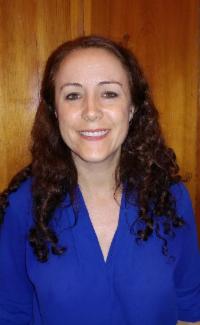


 Next up in the series of interviews of our former DORs turned ED is the one and only Amy Gutierrez! She is not only a former DOR, but served as a Therapy Resource as well. Amy is currently the ED at Treasure Hills in Keystone. She was kind enough to share some of her thoughts with us:
Next up in the series of interviews of our former DORs turned ED is the one and only Amy Gutierrez! She is not only a former DOR, but served as a Therapy Resource as well. Amy is currently the ED at Treasure Hills in Keystone. She was kind enough to share some of her thoughts with us: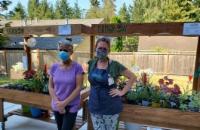



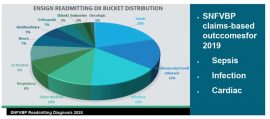 The Mission:
The Mission:
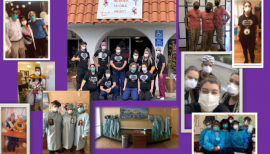 As we persevere through the pandemic, I am often reminded how fortunate I am to have such wonderful teammates. I continue to be the proudest team leader.
As we persevere through the pandemic, I am often reminded how fortunate I am to have such wonderful teammates. I continue to be the proudest team leader.